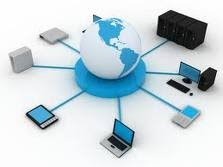Over time, technology has progressed and has created new forms of and ideas about communication. The newer advances include media and communications psychology. Media psychology is an emerging field of study. These technological advances revolutionized the processes of communication. Researchers have divided how communication was transformed into three revolutionary stages:
In the 1st Information Communication Revolution, the first written communication began, with pictographs. These writings were made on stone, which were too heavy to transfer. During this era, written communication was not mobile, but nonetheless existed.
In the 2nd Information Communication Revolution, writing began to appear on paper, papyrus, clay, wax, etc. Common alphabets were introduced, allowing the uniformity of language across large distances. Much later the Gutenberg printing-press was invented. Gutenberg created this printing-press after a long period of time in the 15th century.
In the 3rd Information Communication Revolution, information can now be transferred via controlled waves and electronic signals.
Communication is thus a process by which meaning is assigned and conveyed in an attempt to create shared understanding. This process requires a vast repertoire of skills in interpersonal processing, listening, observing, speaking, questioning, analyzing,gestures and evaluating. It is through communication that collaboration and cooperation occur.[1]
There are also many common barriers to successful communication, two of which are message overload (when a person receives too many messages at the same time), and message complexity.[2] Communication is a continuous process. The psychology of media communications is an emerging area of increasing attention and


















